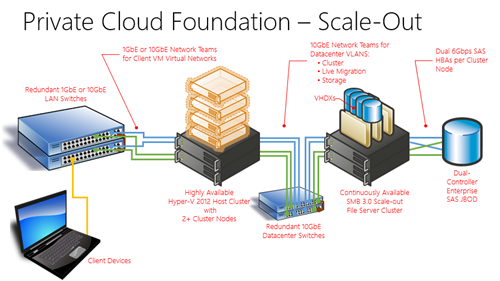Build Your Private Cloud Series: Foundation - Networking with Windows Server 2012 by Keith Mayer
In Part 10 of the Server Virtualization Series last month, I covered off on NIC Teaming. Since networking is an important piece of Server Virtualization, it is a good thing that Keith Mayer covered it again with some additional details in his post in the Build Your Private Cloud Series.
I am including a brief snippet of Keith’s post below, but you will want to read the full article by going directly to his post.
When planning network infrastructure for a Private Cloud, there’s a number of technologies to consider and leverage in Windows Server 2012. At many of my events, IT Pros have lots of questions on when to use various network technologies in their overall Private Cloud design, such as:
- Teaming modes: Switch independent, Static or Dynamic ( LACP ) network teaming?
- Load balancing modes: Address hash or Hyper-V port hash?
- Network isolation: VLAN tagging vs Windows Network Virtualization ( aka WNV or NV-GRE )?
In this article, I’ll walk through a sample architecture for building a Private Cloud network foundation and discuss “when” to leverage each of these components in your overall design. At the end of this article, I’ll also provide additional references for “how” to implement each configuration item.
- Did you miss the other articles in this series?
DO IT: Get the FULL SERIES of articles in Build Your Private Cloud in a Month at https://aka.ms/BuildYourCloud
Private Cloud Foundational Architecture
When building a Private Cloud, most environments find that they really have two main types of network connections from their Hyper-V hosts: Datacenter Networks and Client VM Networks.

Sample Network Architecture for Private Cloud Foundation – Datacenter and Client VM networks
Datacenter Networks
Datacenter networks are the “back-end” networks that Hyper-V hosts use for:
- Connecting to storage
- Live migration of running VMs
- Internal Cluster networks
- Host management networks
- Data backup networks
…
Harold Wong